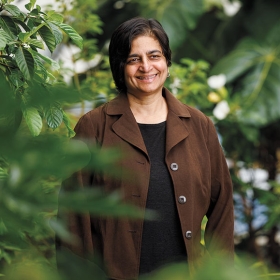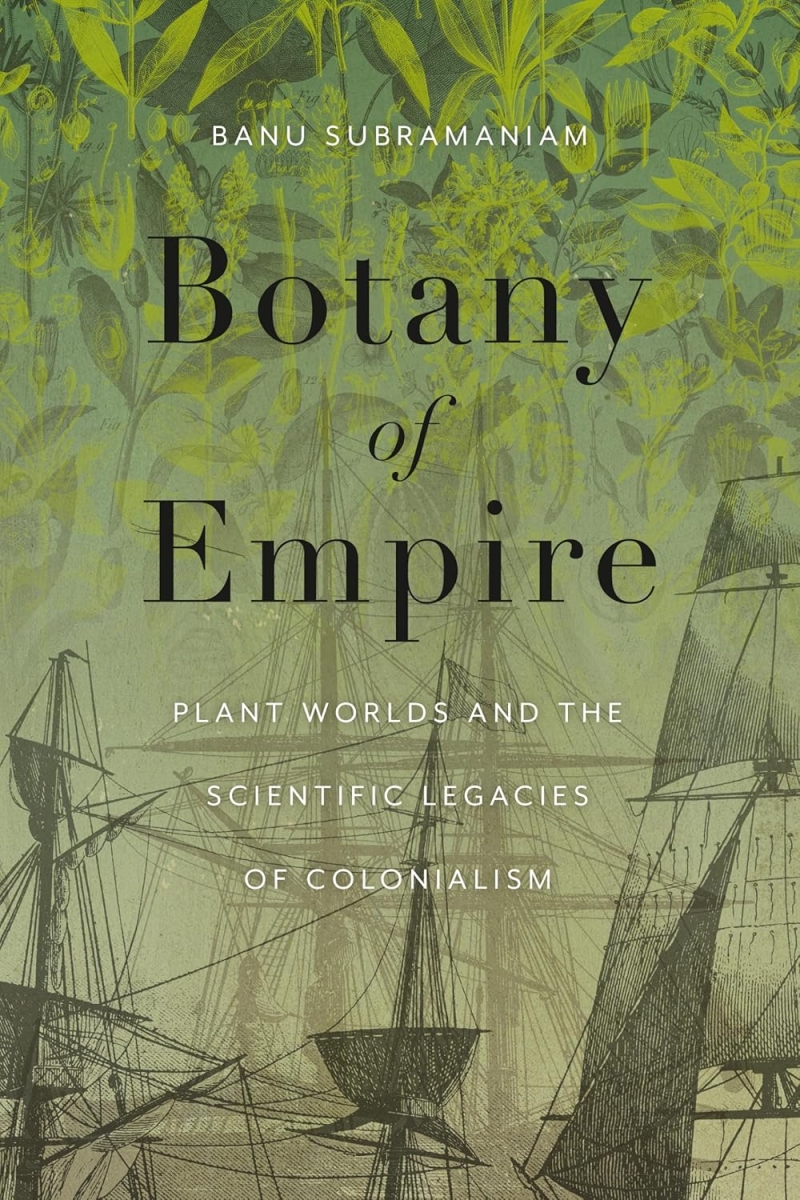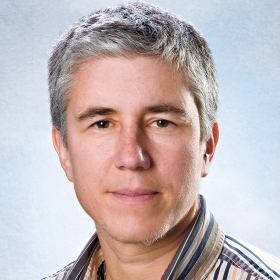Do plants “belong” in a particular place? Why are some considered “native” and others “invasive”? Why do they have Latin names? Are they really “male” and “female”? These are some of the wide-ranging questions at the heart of the new book Botany of Empire: Plant Worlds and the Scientific Legacies of Colonialism by Banu Subramaniam, the Luella LaMer Professor of Women’s and Gender Studies.

Do plants “belong” in a particular place? Why are some considered “native” and others “invasive”? Why do they have Latin names? Are they really “male” and “female”? These are some of the wide-ranging questions at the heart of the new book Botany of Empire: Plant Worlds and the Scientific Legacies of Colonialism by Banu Subramaniam, the Luella LaMer Professor of Women’s and Gender Studies.
The book examines how botany was shaped by colonialism and how that history is still deeply intertwined within the field today. Here, Subramaniam takes a relatively new approach to the study of plants: one that diversifies, that “queers,” and considers complex histories and global relations. The book itself is a radical, genre-bending text that includes not only academic research, but also autobiography, manifestos, and interludes of speculative fiction. This hybrid approach is typical of Subramaniam, who has long reached across academic silos in an effort to create a more expansive biology—and who has been asking challenging questions of the academy for decades.
Raised in India, Subramanian was educated as an evolutionary and plant biologist, and was required to specialize while still in high school. “I had never taken a course in sociology, economics, or political science,” says Subramaniam, who uses all pronouns. It wasn’t until she became troubled by the dearth of women in science while working on her Ph.D. at Duke that she became interested in questions of gender, going on to earn a certificate in gender studies and pivoting into feminist science and technology studies.
Later, a coffee date with a friend in the humanities opened additional areas of understanding. Subramaniam was explaining her doctoral work on the “problem” of color variation in morning glories, which don’t just come in the blue or pink hues most of us call to mind, but also include light, bright white, and white with splashes of color. “Oh, you work on diversity!” the friend exclaimed.

“Until that moment, I had never thought about my biological work in the register of the social sciences or feminist work,” observes Subramaniam, who began looking at their own research with new eyes. “I started asking myself, why did I look at morning glories and think—as my field does—that variation is a problem?” This led them to explore the ways that plant science and social sciences were deeply intertwined. “All of the theories I studied in biology were actually also political questions,” they say.
Since then, Subramaniam has resisted academic disciplines and the academy’s “disciplining” impulse. “Sometimes I feel it forced my synaptic channels in particular ways, so even now I just step back and say, what are other ways of thinking? Being interdisciplinary is a very deliberate method where you have to force yourself to ask questions from different perspectives,” she says.
As the new chair of the Department of Women’s and Gender Studies [WGS] at Wellesley, one of Subramaniam’s goals is to build connections across disciplines. “WGS should be the hub of the university,” she says. “I firmly believe that gender, race, sexuality, and class are central to everything, but we don’t tend to teach them that way. WGS, as a field, can make those connections.” She loves the play and the fun of being in such an interdisciplinary department, where there are no restrictions on the questions one might study. “It’s just joyful to be able to theorize with abandon, to talk about it all, with everybody on campus,” she explains. “There is so much play and inventiveness and imagination.”
What’s next for this boundary-breaking academic? “I’m really interested in getting back into the field and imagining new kinds of projects and new ways of doing biology,” he says. One of the places on campus that particularly interests Subramaniam is the Global Flora Conservatory, which opened in 2019. “I am hoping some kind of collaboration will emerge.”
Outside of her academic interest in plants, Subramaniam is a keen gardener. Does she have a favorite plant she likes to grow?
“Morning glories, of course,” she says, laughing, although some would consider them an “invasive” species.
Any particular color?
“I try to mix them up,” they say with a wink.
[substory:1]
Sarah Ligon ’03 is a writer and gardener based in Oxford, Miss.


